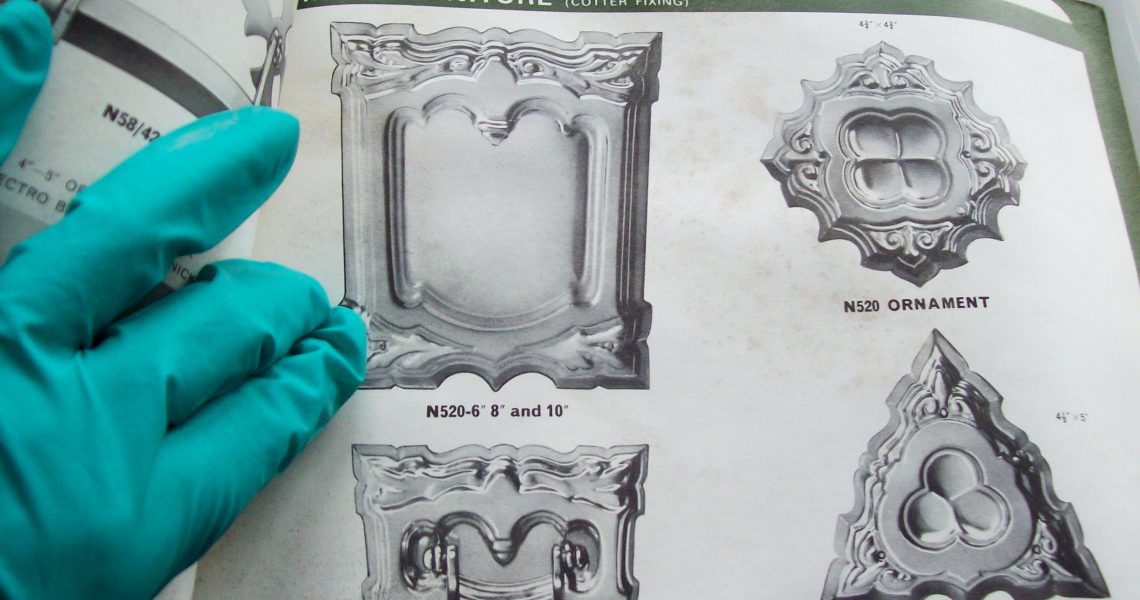 My name is Deborah Magnoler and I’m a conservator, currently working on the Coffin Works’ project. The Newman Brothers’ Coffin Fittings Works in Fleet Street will open to the public in October 2014. While the factory is being refurbished, the whole of its contents, comprising thousands of metal fittings, shrouds, paperwork and machinery are kept in storage at a different location. Here’s an account of my experience so far.
My name is Deborah Magnoler and I’m a conservator, currently working on the Coffin Works’ project. The Newman Brothers’ Coffin Fittings Works in Fleet Street will open to the public in October 2014. While the factory is being refurbished, the whole of its contents, comprising thousands of metal fittings, shrouds, paperwork and machinery are kept in storage at a different location. Here’s an account of my experience so far.
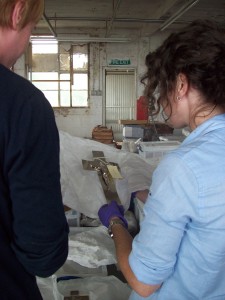
The contents of the ex-factory are being recorded and sorted and will return to their original location before the museum opens; there will be a large number of objects on display, where the public will be able to view and also handle some of them. The rest (mainly duplicates) will be kept in storage as The Coffin Works, like all museums, have taken upon themselves the duty to preserve objects and records for posterity.
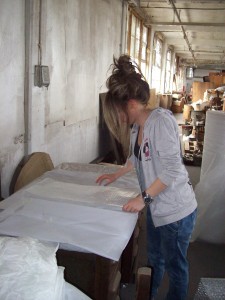
As a conservator, I was asked for advice on a number of aspects relating to the collection and I was able to see it in its current location. I have to admit that when I first stepped into that big, industrial storage space and came to terms with the number of objects we were dealing with, I felt a bit overwhelmed. After all, I was used to working in a sparkling studio, conserving sparkling objects; this was a warehouse, with floors covered in industrial machinery, pallets, furniture, rolls of textiles and storage boxes, piled up high.
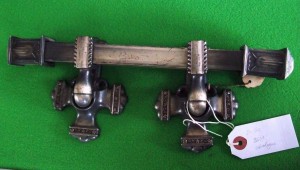
When dealing with projects of this size, it is very important to proceed methodically and in phases: preliminary conservation, mainly in the form of protection of the objects in their current location and during transport has been deemed of fundamental importance and measures such as proper packing and accessioning are well underway. Most of the coffins metal fittings are in very good condition, as they were found undisturbed in their original boxes. It is however necessary to rethink the way the objects will be stored in the future, and how they will be packed for their journey back to the museum. At this point, the choice of storage material is aimed at protecting the objects from a potentially unstable storage environment, dirt and pests, as well as from risk of physical damage. The storage boxes, acid-free paper, labels and marking methods are all of conservation grade and suitable for the long term storage of museum objects.
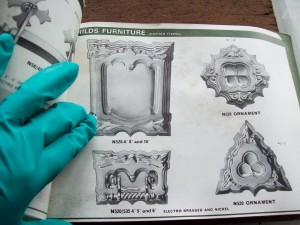
To begin with, a number of easy but fundamental steps were implemented: ensuring that all objects are kept away from the floor by resting on pallets, that the smaller objects are stored in suitable boxes padded with acid free tissue paper (image 3) and that photosensitive material such as documents and textiles are kept away from direct sunlight and dirt. The importance of good housekeeping cannot be underestimated and ensuring the building is in a good state of repair and that floors and surfaces are free from clutter makes for a safer working environment as well as a pest-free one.
While sorting through the objects selecting those that will go on display and those that will go in storage, a number have been identified as needing conservation. These are mostly objects worthy of display, but have been affected by corrosion or might need surface cleaning. A new set of storage provisions are being designed for the site at Fleet Street and once the objects are back in their permanent location, a programme of conservation can be designed to suit the specific needs of the collection. Meanwhile, all that is possible is being done to prevent further deterioration.
This is a huge project, but a very exciting one and I feel very lucky to be able to be part of it and see a museum, literally, as it’s being created.
Deborah Magnoler

